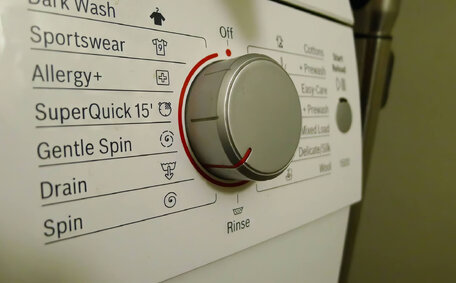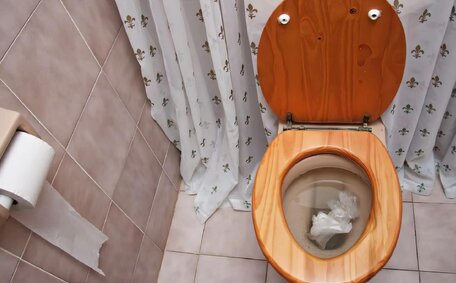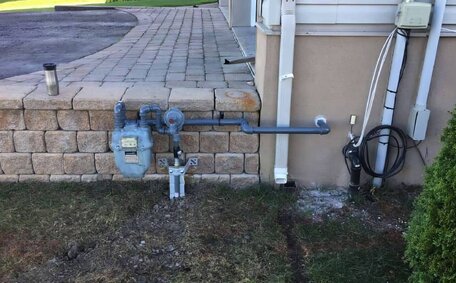Early Drainage Systems Used by Ancient Civilizations (2000 BC - 500 AD)
The Indus Valley civilisation, located in today’s Pakistan and north-western India, pioneered one of the earliest drainage systems over 4000 years ago. These pioneering drainage systems significantly advanced public health and water management for a population exceeding 5 million.
Concurrently, in ancient Crete and Greece, terracotta piping systems were developed, laid under floors to remove wastewater from homes and streets. Further developments came in Rome in the 6th century BC with the Cloaca Maxima - a large drainage channel to flush waste into the Tiber river.
This approach facilitated the drainage of marshlands, enabling Rome to expand. By the 1st century AD, Rome showcased an extensive sewage system, catering to public baths, latrines, cesspools, and roadside drains. However, despite their innovativeness, these systems sometimes led to water supply contamination and subsequent disease outbreaks.
The principles behind these early drainage systems - using gravity flow, redirecting waste, and incorporating drainage channels - paved the foundation for future advances in plumbing infrastructure aimed at improving sanitation and public health.
Basic Drains and Gutters During the Middle Ages and Renaissance (500 AD - 1700s)
In the 1300s, English manor houses featured lead-lined gutters to channel rainwater from roofs to drainpipes, cisterns, or trenches.
Middle Ages Gothic architecture brought about the widespread use of gargoyles – ornate waterspouts crafted into stone figures and animals. By the 1400s, prominent structures like the Tower of London featured open-mouthed gargoyles to allow rainfall off rooftops to exit buildings. Initially decorative, gargoyles eventually became functional elements of drainage systems, redirecting water away from structural walls and foundations.
Advancements in early plumbing were constrained during the Middle Ages due to a lack of technological innovations, limited materials, and lower prioritisation of public health and hygiene.
Advancements in Drainage Technology After the Industrial Revolution (Mid-1700s Onwards)
The Industrial Revolution marked a pivotal point in plumbing history with rapid advancements in drainage technology. New materials such as cast iron and zinc, coupled with improvements in pipe-making, were widely adopted due to mass production.
In 1810, Fredrick Tudor introduced the cast iron soil stack system in Massachusetts, which distinguished waste and vent lines. Meanwhile galvanised wrought iron and later galvanised steel offered increased durability over traditional lead piping.
Chicago led the way in 1848 by constructing an extensive sewer system from brick, clay, and cast iron. Soon after, London and Paris erected vast underground sewage networks, realising concepts from visionaries like Joseph Bazalgette.
In 1880, George Jennings introduced the U-bend, a pioneering drain trap designed to prevent sewer gases from entering buildings. And by the later 1800s, modern drainage concepts emerged including the French drain, septic tanks for rural sewage and the incorporation of vent stacks within internal household plumbing systems.
The Industrial Revolution’s mass production techniques enabled the swift construction of drainage systems, providing cities with modern sanitation facilities. Future advancements focused on increased efficiency, environmental responsibility and technology integration - but the innovations of this era established the foundations of modern plumbing and drainage.
The Move Towards Sustainable and Eco-Friendly Drainage in the 20th Century
With increased environmental consciousness in the 20th century, drainage systems developed towards greater sustainability. In the 1990s, the concrete EJP-DRain system was introduced, designed to harvest rainwater and reduce flooding and pollution.
Of note is Australia’s development of Water Sensitive Urban Design (WSUD) focusing on sustainable stormwater systems. This integrates vegetation, biofiltration and interconnected waterflows mimicking nature. WSUD guidelines in Melbourne have been influential in expanding green spaces, bolstering waterway health, and enhancing overall livability.
New materials like porous concrete and permeable paves absorb rainfall, recharging groundwater. Integrated smart sensors monitor drainage performance, while improved manufacturing reduces environmental impacts. Preferring gravity to pumping reduces energy use.
The shift towards sustainable drainage delivers multiple benefits. Environmental advantages include utilising stormwater for irrigation, restoring natural ecosystems, and reducing contamination from roads. For cities, these systems attenuate flooding, boost water security during droughts and enhance community spaces.
The ultimate goal of innovation in sustainable drainage is to achieve closed-loop water systems that effectively harvest, biofilter, and recycle rainfall. With global populations growing, managing water sustainably using solutions tailored to urban landscapes will be crucial for future cities.
Modern Plumbing Materials and Methods for Improved Drainage
Innovations in materials and methodologies have made modern drainage systems more water-efficient, durable, and environmentally friendly.
In modern construction, polyethylene and PVC have superseded metal as the materials of choice for drainage pipes. Plastic systems are corrosion resistant, lightweight and easy to install using solvent welding and push-fit joins. 3D printing now enables bespoke plastic drainage components to be fabricated on demand.
While stainless steel and vitreous china are still common, advancements such as germ-resistant taps, low-flow toilets, and smart shower drains with LED lighting exemplify modern fixture materials.
Commercial drainage systems must include testable backflow prevention devices to safeguard the water supply from contamination. While mandatory water conservation standards require dual-flush toilets, GREYWATER recycling and stormwater harvesting integration in all new builds.
Preventative maintenance helps optimise drainage system performance. Pipe inspections identify leaks or cracks requiring repair. High-pressure jet cleaning clears accumulated debris and grease in drains. Regularly replenishing water in drain traps also prevents evaporation and keeps odours at bay.
Common residential drainage issues involve build ups of Fats, Oils and Greases (FOGs), tree roots infiltrating pipes, accidentally flushed toys causing obstructions and general wear from erosion and corrosion. Tools like combination machine rodder-jetters clear blockages, and trenchless pipe lining reconstrues system integrity.
Ongoing drainage innovation aims to address environmental challenges around water scarcity and flooding exacerbated by climate change. Smart sensor networks, powered by the Internet of Things, enhance flow management and facilitate early fault detection. While integrated greywater reuse and biofiltration systems improve sustainability.
Future Innovations: Smart Drainage Systems and Water Recycling
Emerging drainage systems will leverage smart technologies and water recycling to bolster sustainability, efficiency, and resilience. The next-generation systems, designed for the unique climate and urban landscape, offer significant benefits to Padstow and south-eastern Sydney.
Smart drainage systems use real-time sensors, data analytics, and online controls for optimal performance. Detecting leaks early prevents wastage while dynamic pumps and valves regulate flows, attenuating flooding. Cloud-based analysis informs predictive maintenance and faults are reported remotely via apps.
Water-sensitive urban design (WSUD) initiatives will expand, with stormwater harvesting and wastewater recycling delivering decentralised solutions. Micro water treatment plants integrated into new developments filter and reuse all household water onsite. Stormwater filtered through bio-retention raingardens irrigates nearby parks and green roofs, while also recharging aquifers.
The clay soils and proximity to the Georges River in Padstow pose drainage engineering challenges, such as ground heave, landslips, and seawater infiltration, all of which require strategic mitigation. Smart sensor networks identify subsidence hotspots, enabling preventative action.
Coordinated adoption of intelligent drainage systems and decentralised water reuse across Sydney will reduce stress on ageing centralised infrastructure unfit to meet the demands of rapid densification and climate change. Future suburban designs nominated as Water Conservation Zones will showcase Australia’s global leadership in resilient and sustainable urban water management.






